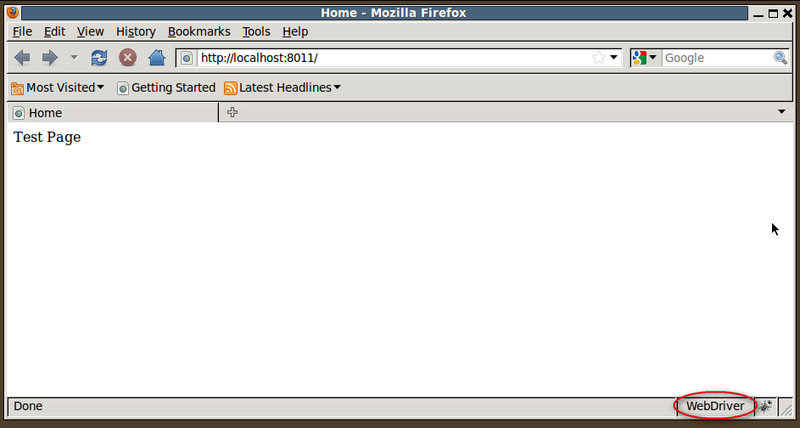Django and Selenium Integration

Hello.
It's no secret that application testing is an important step in software development, and if you are developing web applications, then you just need to test the web interface. Fortunately, a tool like Selenium exists for this purpose . The well-known companies SKB Kontur and Yandex have already chosen it as a tool for functional testing of their applications and services (Yandex talked about this at the recent YaC).
Now to the point.
In one of the projects I'm working on, we used Selenium starting from the first branch. But time does not stand still, released Selenium 2.0, based on webdriver technology, more functional, convenient, and correctly imitating events in the browser ( more about the benefits ).
In order not to update the old Selenium support code inside our application (what if it will have to be done more than once?), And also to try to do something useful for other developers, we decided to immediately integrate Selenium into a separate library.
Next, I will describe what we did and how to use this library.
Installation
The library can be taken from https://github.com/dragoon/django-selenium or installed via pip:
pip install django-seleniumOpportunities
First of all, the library allows you to integrate with the django testing subsystem . You can either simply specify in the settings to use TestRunner from the library:
TEST_RUNNER = 'django_selenium.selenium_runner.SeleniumTestRunner'Behind the scenes, SeleniumTestRunner does the following:
- starts selenium-server.jar server
- launches a test server instance with test fixtures
Standard Driver Extension
To facilitate the performance of standard operations, an extended driver class has been written that interacts with the browser - django_selenium.testcases.MyDriver . It contains operations such as opening a url, logging in to the site (the standard form of django), finding an element using the css selector, finding an element and clicking, check the presence of text on the page, receive alert text and others. For details, please refer to the source code of the MyDriver class for now .
Replacing the test run command
Finally, to replace the standard django test execution command with a command that supports selenium tests, you need to inherit the command class somewhere in your application as follows:
from django_selenium.management.commands import test_selenium
class Command(test_selenium.Command):
def handle(self, *test_labels, **options):
super(Command, self).handle(*test_labels, **options)- --selenium - run all tests, including Selenium tests
- --selenium-only - run only Selenium tests
Test application
To consolidate the above, I prepared a small django application containing one selenium test:
# Скачиваем selenium-server.jar
wget http://selenium.googlecode.com/files/selenium-server-standalone-2.7.0.jar
git clone git://github.com/dragoon/django-selenium-testapp.git
cd django-selenium-testapp
# Установить правильный путь в переменную SELENIUM_PATH
vi settings.py
# Запускаем тесты
./manage.py test --selenium-only
...
----------------------------------------------------------------------
Ran 1 test in 13.254s
OK
If everything went right, the following picture should be observed:

As always, I will be glad to hear comments and suggestions for further refinement, opinions on how useful this library is, and of course I will be happy for any further refinement from other githubbers.
Thanks for attention.
